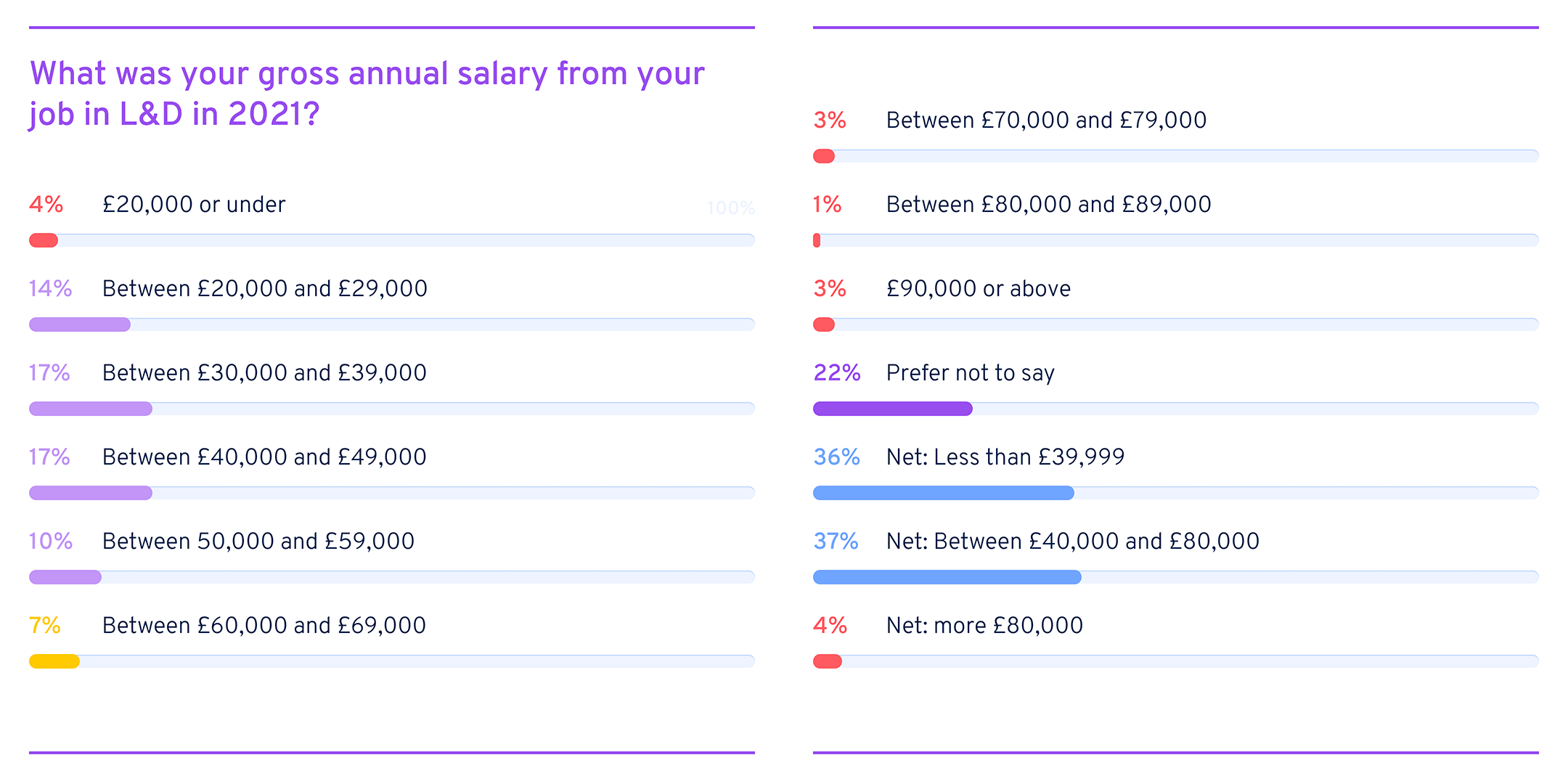How Can We Level the Playing Field and Address the Gender Pay Gap?
In our third chapter, we talked about the challenges L&D professionals face in advancing their careers and how this impacted men and women differently. We found that women were still primary caregivers which impacted their ability to progress their careers. One of the ways we identified in overcoming this was to shrink the gender pay gap.
In this section, we delve into this topic in more detail, and offer some practical strategies employers can use to meaningfully address these disparities.
Are women making less than men in L&D?
Our survey found that indeed, women in L&D make less than men.
The mean (average) salary for men came out at £34,050. The mean (average) salary for women came out at £27,450. This is a difference of 19%.


When it came to the question of whether men make more than women for the same jobs, we also found this to be true.
For respondents with the job title, learning and development specialist/administrator, the average salary for men was £35,550. For women, the average salary was £20,600.
For respondents with the job title, learning and development manager, the average salary for men was £46,100. For women, the average salary was £39,100.
For respondents with the job title head of learning and development, the average salary for men was £61,600. For women, the average salary was £49,950.
So, how does L&D stack up against the UK average? Some companies still have gender pay gaps in excess of 10%, with the average mean difference in hourly pay across all businesses at 13.6%. This means that, on average, women are earning just 86.4p for every £1 earned by men.
This suggests that L&D has an even wider gender pay gap than the national average, with the biggest difference in lower salary bands for jobs such as learning and development administrator and for higher salaries for jobs such as head of learning and development.
*Note: this data is based on 488 respondents identifying as male and 522 female, and includes 242 respondents who did not share their salary data. The number of respondents also varied in each group which impacts the average figures.
L&D has an even wider gender pay gap than the national average, with the biggest difference in lower salary bands for jobs such as learning and development administrator and for higher salaries for jobs such as head of learning and development.
Do women feel comfortable asking for a pay rise?
In addition to the gender pay gap that clearly exists in L&D, our survey also found discrepancies in comfort levels when it came to asking for a pay rise.
Women are 50% less likely than men to feel comfortable asking for a pay rise. 44% of male respondents said they would feel comfortable asking for a pay rise vs only 22% of women who said they’d feel comfortable. This again points to the self-confidence barriers that exist amongst women to progressing their careers, salary included.
Don't forget to check out our top tips for getting the pay rise you deserve.

Are You Being Paid What You're Worth?
By downloading, you agree to our privacy policy.
What can employers do to level the playing field?
Eradicating the gender pay gap won’t happen overnight. But there are things organisations can do to move the needle and show commitment to developing women’s growth.
- Stick to defined salary ranges. Many mature organisations use salary ranges to structure their compensation policy but clearly, they’re not always exempt from bias. Employers should ensure their salary ranges aren’t just a soft guideline that falls apart when reality knocks on the door—they should be the law. For example, at 360Learning we assign salaries based on a mathematical model, and we don’t authorize ourselves to deviate from that. This means our salary levels aren’t affected by biases, such as the fact that 60% of women say they never negotiate their salaries.
- Prove your commitment. Organisations should show women that they’re committed to inclusion and diversity. There are many ways to heighten awareness of inclusion and diversity in the workplace. See how we at 360Learning launched a learning campaign to celebrate Women’s History Month as part of our initiatives already in the works to support women at our company.
- Develop clear career pathways for everyone. Be sure to have the correct support systems in place to help employees achieve their milestones.
- Promote a continuous learning culture. Embrace the learning organization model by encouraging continuous learning in the workplace and ensure you have the right tools in place to facilitate knowledge consumption over time. This will help women increase their performance, drive their fulfilment, and progress in their careers.
And now for the final chapter of our L&D Salary Benchmark report: How to prove your value as an L&D leader.


